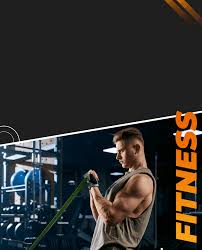Olympic weightlifting is a dynamic and highly technical sport that requires not just physical strength but also precision, speed, and technique. Whether you’re a beginner or a seasoned lifter, having the right gear is essential for achieving optimal performance and minimizing the risk of injury. This guide will dive into the must-have Olympic weightlifting gear, why it’s important, and how to choose the best options for your training needs.
- Olympic Weightlifting Shoes
Weightlifting shoes are arguably the most important piece of equipment for any Olympic lifter. These specialized shoes are designed to provide stability, improve mobility, and enhance performance during lifts like the snatch and the clean and jerk.
Key Features:
- Raised Heel: Typically between 0.5 and 1 inch, a raised heel improves ankle mobility, allowing for deeper squats and better positioning during lifts.
- Solid Sole: Unlike running shoes, weightlifting shoes have hard, non-compressible soles that provide a stable base for heavy lifts.
- Straps: Most weightlifting shoes have midfoot straps to keep your feet securely in place.
Top Picks for Weightlifting Shoes:
- Adidas AdiPower
- Nike Romaleos
- Reebok Legacy Lifte
- Weightlifting Belt
A weightlifting belt is a crucial tool for maintaining proper form and protecting your lower back during heavy lifts. It works by increasing intra-abdominal pressure, which stabilizes your core and reduces strain on your spine.
When to Use a Belt:
- Heavy squats, deadlifts, or cleans where core stability is paramount.
- Max effort lifts or high-intensity training sessions.
Types of Belts:
- Lever Belts: Offer quick adjustments and a secure fit.
- Prong Belts: More traditional and highly adjustable.
Look for belts made of durable leather or nylon with a width of 4 inches for consistent support.
- Knee Sleeves
Knee sleeves provide compression and warmth to the knees, enhancing blood flow and reducing the risk of injury during training. They also help with joint stability, especially during squats and other lower-body movements.
Benefits of Knee Sleeves:
- Alleviate knee pain during heavy lifting.
- Provide extra support without restricting mobility.
- Promote recovery by reducing inflammation.
Choose knee sleeves made from high-quality neoprene with a thickness of 5mm to 7mm for maximum durability and support.
- Wrist Wraps
Wrist wraps are an essential piece of gear for lifters who experience wrist discomfort or need extra support during overhead lifts like the snatch or clean and jerk.
Why Wrist Wraps Are Important:
- Stabilize the wrists during heavy lifts.
- Minimize strain on the joints.
- Help maintain proper wrist alignment for better technique.
Opt for wraps with adjustable velcro straps to ensure a snug fit and ease of use.
- Lifting Straps
Lifting straps are used to improve grip strength, especially during heavy pulls like deadlifts and snatch pulls. While grip strength is essential in Olympic lifting, straps allow you to focus on your technique and overall performance without worrying about losing your grip.
Types of Straps:
- Loop Straps: Versatile and easy to use.
- Figure 8 Straps: Ideal for maximum security during heavy pulls.
Use lifting straps sparingly to avoid over-reliance and ensure your grip strength continues to develop.
- Barbell and Bumper Plates
A high-quality barbell and bumper plates are the cornerstone of Olympic weightlifting training. Investing in the right equipment ensures safety and enhances your overall lifting experience.
Olympic Barbell Features:
- Whip: Refers to the flexibility of the bar, which helps with dynamic lifts.
- Knurling: Provides grip but shouldn’t be overly aggressive to prevent tearing your hands.
- Sleeves: Should spin smoothly to reduce torque on your wrists and shoulders.
Bumper Plates:
- Made from durable rubber, bumper plates are designed to withstand being dropped from overhead.
- They’re safer for your equipment and flooring compared to traditional iron plates.
- Chalk
Chalk is a simple yet effective tool for improving grip during Olympic lifts. It absorbs sweat and prevents your hands from slipping on the bar, allowing for better control and reduced risk of injury.
Types of Chalk:
- Block Chalk: Most common and cost-effective.
- Liquid Chalk: Less messy and gym-friendly.
Keep a small bag of chalk in your gym bag to ensure you’re always prepared for heavy lifting sessions.
- Compression Gear
Compression gear, such as tights or shirts, can improve blood circulation, enhance recovery, and reduce muscle soreness. While not a necessity, many lifters find compression apparel helpful for staying comfortable and maintaining focus during long training sessions.
- Gym Bag Essentials
To keep all your gear organized, invest in a high-quality gym bag. Some additional items to consider packing include:
- Foam roller or massage ball for pre- and post-workout mobility.
- Water bottle to stay hydrated.
- Extra pair of socks or lifting clothes.
- Optional Gear
Depending on your training style and goals, you might also consider the following:
- Tape: Protects your thumbs and fingers during hook grip use.
- Lifting Singlet: Required for competition and provides unrestricted movement.
- Resistance Bands: Great for warm-ups and mobility drills.
Conclusion
Olympic weightlifting is a demanding sport, but having the right gear can make all the difference in your performance and safety. Investing in high-quality equipment tailored to your needs ensures you train effectively and progress in your lifting journey. Whether it’s sturdy weightlifting shoes, supportive knee sleeves, or a reliable belt, each piece of gear plays a vital role in helping you achieve your goals.
